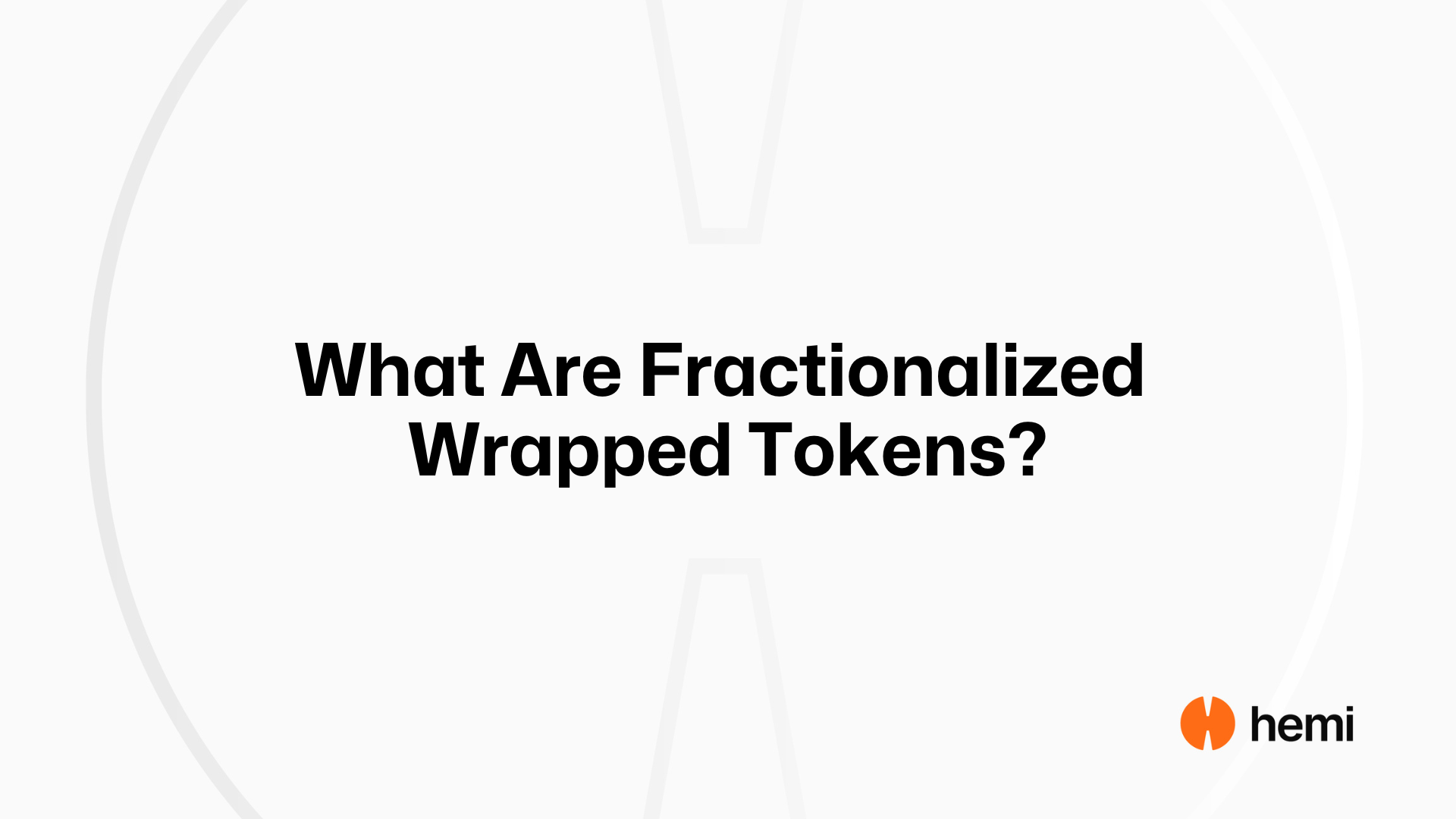- Bitcoin
- Ethereum
- Hemi
- Learn Center
- January 6, 2025
What Are Fractionalized Wrapped Tokens?
Wrapped tokens can be chunked into parts. Those are called fractionalized wrapped tokens.

Fractionalized wrapped tokens combine two concepts in blockchain technology: asset wrapping and token fractionalization. Together, they create a structure for shared ownership of digital or physical assets, with a level of control and accountability that mirrors traditional finance.
A wrapped token is a digital representation of an asset that exists on a different blockchain or off-chain entirely. Wrapping allows an asset—whether it’s bitcoin, real estate, or company equity—to be used in blockchain-based applications. The original asset is held by a custodian or locked in a smart contract, while a new token is issued to represent it. That token can be used on a different blockchain or in a different format than the original asset.
Fractionalization takes that wrapped token and breaks it into smaller units. Instead of one person owning a full token that represents, say, a building or an artwork, many people can hold fractions of it. These fractional tokens each represent a share of the total value and can be bought, sold, or transferred independently. This makes high-value assets more accessible to a wider group of users.
The process typically works like this: an asset is wrapped into a smart contract, which issues a base token that stands in for the full value of the asset. That token is then divided into many smaller units, based on the rules set by the issuer. The smart contract also maintains a record of all fractional holders and automates updates to the ownership structure.
This model introduces benefits in terms of both liquidity and access. Expensive assets that are difficult to trade can be broken into lower-cost pieces, allowing more buyers to participate. It also creates flexibility in how ownership is managed, especially for assets that don’t have a natural buyer at full value.
One challenge is trust in the custodian. If the asset being tokenized is not stored properly or cannot be verified, then the fractional tokens lose their credibility. This is why many fractionalized wrapped tokens rely on permissioned systems with identity verification, governance controls, and legal agreements. Standards like ERC-3643 allow token issuers to build in compliance features, giving holders stronger guarantees.
Fractionalized wrapped tokens also raise legal and regulatory questions. If they represent real-world assets or financial instruments, they may be subject to securities laws or other oversight. Some jurisdictions are beginning to define how digital assets fit within existing legal frameworks, but the landscape is still developing.
Despite these challenges, fractionalized wrapped tokens point to a practical use of blockchain: creating liquid, divisible, and programmable representations of assets that people already understand. They offer a bridge between the speed and openness of crypto and the structure and stability of traditional finance.
As the tools to manage identity, custody, and compliance improve, we’re likely to see more use cases where large or illiquid assets are opened up to broader ownership through fractionalized wrapped tokens.